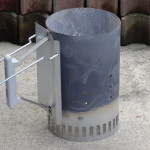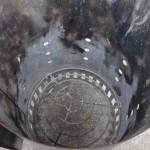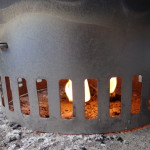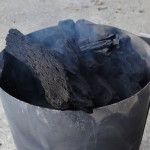Charcoal
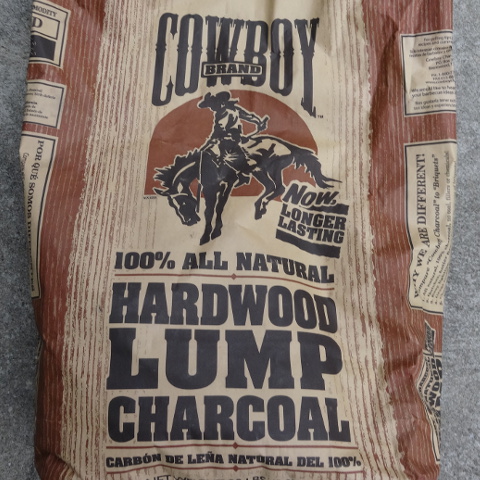
Cooking with fire… thousands of years of culinary history is tied to fire… wood fire. Here at ONK, we love cooking outdoors. From the highs during our Midwestern summers, through the lows of our Midwestern winters, you will see us cooking outside for the love of wood fire and wood smoke. There are all kinds of opinions when it comes to fuels for grilling and smoking. Some people swear by particular woods, or particular brands of charcoal, or briquettes vs lump. Here’s a real pro-tip: choose good quality meats, season them well, and cook them to an appropriate internal temperature, and the fuel you use will be an afterthought. Champion barbequers use whatever fuel they can get on sale, or for free. You are choosing a fuel as a source of heat, not as a source of flavor.
That said, neither you nor I are champion barbequers, and we are not masters of building the perfect fire. For us mere mortals, we need a fuel that burns at an even temperature, potentially for multiple hours. If you’re attempting a long cook (like smoking a full packer brisket, which can run 10-14 hours depending on the technique), find a fuel that you’re comfortable with, and that you know the properties of, and STICK WITH IT. Consistency in your choice of fuel lets you take one more variable out of the equation. On longer cooks you’re going to have to add fuel multiple times, knowing how your fuel burns makes any cook that much easier.
One big note regarding lump charcoal: find a brand that you trust to not use scraps of treated lumber. Treated lumber contains all kinds of nasty chemicals, that while excellent for protecting the wood from the elements, are not so excellent for human bodies. Sadly, there are no regulations regarding the wood that is used to make charcoal. If you find a piece of charcoal in the bag you have bought that looks like lumber DO NOT USE IT and consider switching brands. We here at ONK trust Cowboy Brand Lump Charcoal because of its long-standing traditions, and commitment to quality.
Now that we have the basics down, let’s talk about getting your fire started. Use a charcoal chimney to start your charcoal, and NEVER use lighter fluid. PERIOD. Using a chimney is just as fast, it’s easier, and it doesn’t bathe your food in the nasty chemical fumes associated with the hydrocarbons in lighter fluid. This leaves you to worry about what’s important, seasoning and properly cooking your food. When it comes to starters, the only one I can recommend in good conscience is the Weber 7416 Rapidfire Chimney Starter. Its construction is superb, its capacity is large, and despite costing a few bucks more than the bargain starter at your local hardware store, it will be with you season after season. Starters I bought early in my grilling career rusted inside a season, sitting in the garage, never being out in the elements. The Weber on the other hand, has survived being forgotten out in the rain. Additionally, the nature of the cone-shaped engineering of the Weber (see photo #2 in the gallery above) leads to more of the surface area of the bottom layer of charcoal being exposed to the flame of the starting materials. And yes, if you look at the pictures, my starter looks well-worn from many seasons of use, and I expect it to carry on for many seasons more.
Another great tool when it comes to using charcoal are the Weber 7417 FireStarters Lighter Cubes. These little magic cubes are odorless, and smokeless, meaning that they will not “color” your food with chemical tastes or aromas. They light in seconds, even when wet, and I’ve been able to get a chimney started in a rather stiff wind storm that would have laughed at the likes of crumpled newspaper. Seriously, though not free (like newspaper) these little marvels weigh in at less than 14 cents apiece when purchased from Amazon, and will save you so much time and hassle versus other starting fuels.
To tell when your charcoal is lit and ready to use, depends on which you chose. Briquettes will have a faint glow under a fine white layer of ash, while lump charcoal will glow a bit more brightly, and will likely never ash over completely. If you are grilling and don’t need hours of heat, pour the coals when you’re ready to cook, your control of the distance between the coals and your meat (by raising and lowering the charcoal tray) will have more impact on the outcome than the particular temperature of the coals. For smoking, when you’re trying to build a longer lasting fire, and need finer control of temperatures, getting the coals into your smoker sooner rather than later can give you more time to adjust your vents, and your temperature before you add your meat.
So now that we’re cooking with fire, tell us about your outdoor cooking exploits in the comments below.


